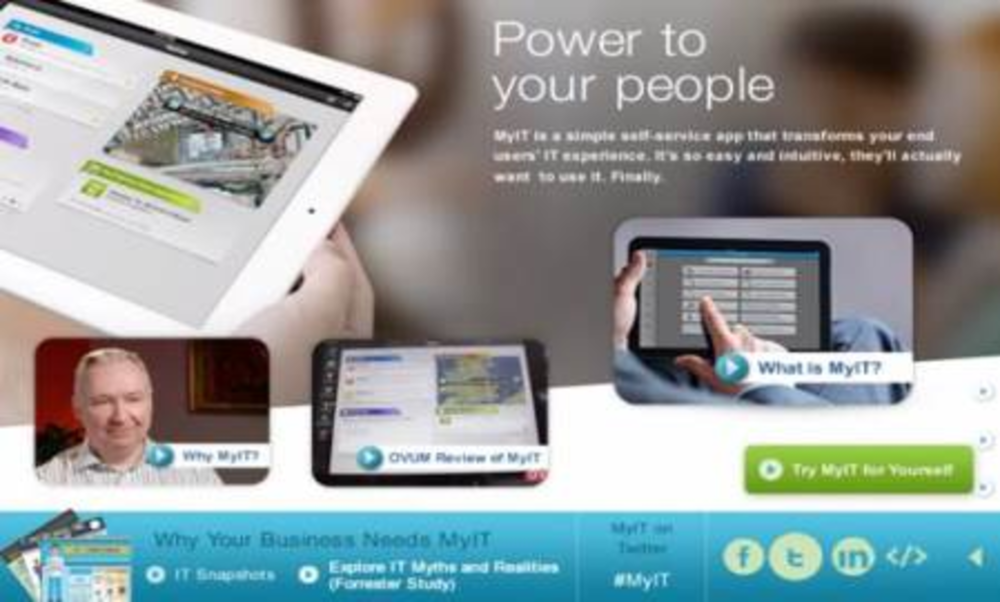These days, all manner of marketers are slaving away at creating content, whether its blog posts, infographics or original video, if you’re really flush with time and money. The trouble with most content is nobody sees it, since it lives where the marketer lives. For it to be really effective, content needs to be where the customer is.
With Content Capsule, digital production firm NextWorks says it has the solution to making your content portable.
The Content Capsule is a self-contained collection of multimedia items a brand can use to package thematically consistent, relevant content. In essence, it’s a mini-version of a brand’s website, or a product/promotion microsite. The added value is that the Content Capsule can be embedded across a variety or earned, paid and social media, which means marketers can take the content to the customer, instead of spending time trying to lure them to company website.
What is it:
The Capsule can contain images, videos, documents, links, calls to action, social media sharing buttons and all other sorts of multimedia assets in a customized display. It can be deployed to serve a number of purposes, for example, highlighting a particular piece of content (such as a whitepaper,) as an internal newsletter or launching a new product. But as NextWorks CEO Tim Bahr puts it, it’s most effective as a tool to guide its viewer towards a purchase or a call to action.
“With the Content Capsule, you can use multiple elements to guide someone through a decision-making process,” says Bahr. “It gives them all the information they need about that product without ever having to leave the brand’s content.”
Bahr says his idea for Content Capsule was borne from his frustration of not being able to easily get all the information he needed to make an important purchase. “For years, I kept trying to buy a home cinema, but all I could see were ads and user generated content, says Bahr. “If one of those guys had given me everything I needed to know about buying that product in one place, I would have bought it from them.”
How it works:
Let’s say a marketer wants to promote their brand’s latest line of running shoes. They can work with the design and programming team at NextWorks to create a Content Capsule for the shoes. Within the capsule, they can place a big image of the shoes, surround it with videos of people running in them, testifiying about their comfort, and employees talking about its specific advantages. They can also place a link to customer comments and reviews about the product on the brand’s website. Lastly,they can prominently place a call to action such as “Click here to buy now” or “Click here to get 10% off” or “Follow us on Instagram”
Within a number of days, the NextWorks team will incorporate all these multimedia elements into the Capsule and give the marketer an embeddable code they can use to place that Content Capsule across any property they want. It could go out in a press release, be embedded in a blog, or placed on a Facebook page. It can also be used in paid media. A brand could bundle the Content Capsule into its display ads in such a way that when a visitor hovers or clicks over the ad, the Content Capsule will pop-up. Now, instead of a potential customer having to click on the ad and go to the company’s website, search for product reviews, pricing, and articles about it, everything surfaces right around the product, and this, in theory, makes it easier for them to purchase the product.
Here’s a few examples of how some companies are using Content Capsule:
– BMC Software created a Content Capsule to get prospects to demo its MyIT self-service app.
– Contact Lens maker CooperVision used the Content Capsule as an app on its Facebook page to give tips on how to deal with eye allergies.
– P&G used a Content Capsule to highlight its sustainability efforts.
Bahr says clients have used Content Capsule not just to place content around a product, but for non-marketing uses as well. It has been used as an HR tool (e.g. making sure everyone has watched the latest sexual harassament video) as well as an internal showcase for a department’s achievements, or a company newsletter. It’s also another way for a company to maintain control of its marketing content, such as in cases where there are retailers and resellers for their product. A brand could easily create a Content Capsule and distribute it to all partner websites, making sure the quality of the message doesn’t get diluted.
In addition to customizing the content, clients using Content Capsule get in-depth analytics about how each piece of content is performing, which they can use to make adjustments on the fly. In addition, NextWorks says it can also create customized content for the client, such as product videos and demos. While all clients have to work with the NextWorks team to design their Content Capsule, Bahr says the company is also working on an option where the client can design and implement their own Capsule.






